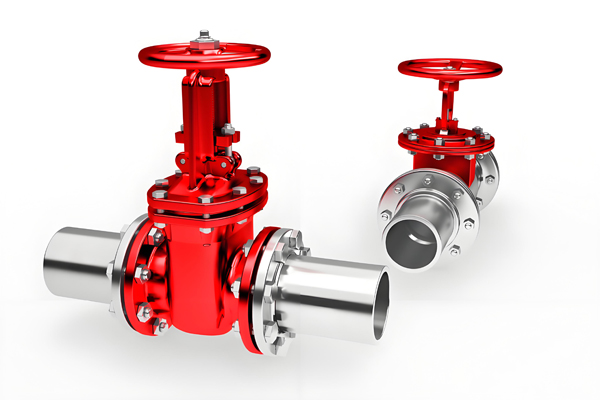What is A Gate Valve? Definition, Structure, Types, and Supplier Insights
Introduction
A gate valve is a critical component in industrial piping systems, designed to control the flow of fluids. Widely used in water supply, oil and gas, and chemical industries, gate valves are known for their reliability and straightforward operation. In this article, we’ll explore the definition, structure, functions, classifications, materials, connection methods, and pricing of gate valves, while comparing major manufacturing countries like China, the USA, and Germany.

What is a Gate Valve?
A gate valve is a linear-motion valve that uses a flat or wedge-shaped gate to start or stop fluid flow. When fully open, it allows unrestricted flow, and when closed, it provides a tight seal. Its simple design makes it ideal for on/off applications rather than flow regulation.
Gate Valve Structure
A typical gate valve consists of:
1. Body: Houses internal components and connects to the pipeline.
2. Gate/Wedge: A movable disc that blocks or permits flow.
3. Stem: Connects the handwheel or actuator to the gate.
4. Bonnet: Covers the stem and body, ensuring leak-proof operation.
5. Seats: Surfaces against which the gate seals when closed.
Functions of Gate Valves
- On/Off Control: Primarily used to fully open or close pipelines.
- Low Flow Resistance: Minimal pressure drop when fully open.
- Bidirectional Flow: Suitable for applications requiring flow in both directions.
Gate Valve Classifications
Gate valves are categorized based on:
1. Gate Design:
– Wedge Gate Valve: For high-pressure systems.
– Parallel Slide Gate Valve: Ideal for steam or gas.
2. Stem Type:
– Rising Stem: Visible stem movement indicates valve position.
– Non-Rising Stem: Compact design for limited space.
Common Materials
Material choice impacts durability and application:
- Cast Iron: Cost-effective for low-pressure water systems.
- Stainless Steel: Resists corrosion in chemical or marine environments.
- Carbon Steel: Suitable for high-temperature oil/gas pipelines.
- Bronze: Used in marine and HVAC systems.
Connection Methods
Gate valves connect to pipelines via:
1. Flanged Ends: For high-pressure industrial systems.
2. Threaded Ends: Common in small-scale plumbing.
3. Welded Ends: Provides leak-proof performance in critical applications.
Gate Valve Price Factors
The price of a gate valve depends on:
- Size and Pressure Rating: Larger valves or higher-pressure classes cost more.
- Material: Stainless steel valves are pricier than cast iron.
- Brand and Supplier: Established manufacturers may charge a premium.
On average, prices range from $5 for small cast iron valves to $1,000+ for large stainless steel valves.
Major Production Countries: China vs. Global Suppliers
1. China:
– Dominates global production with cost-effective solutions.
– Houses numerous factories and manufacturers offering bulk orders.
– Competitive prices without compromising quality (e.g., ASTM/API standards).
2. USA & Germany:
– Known for high-precision valves but at higher costs.
– Preferred for specialized industries like nuclear or aerospace.
3. India:
– Emerging as a budget-friendly alternative to China.
Why Choose Chinese Suppliers
- Lower MOQs: Ideal for small to medium businesses.
- Customization: Many **factories** offer tailored designs.
- Fast Delivery: Robust logistics networks.
Conclusion
Gate valves are indispensable for fluid control across industries. Understanding their structure, materials, and pricing helps in selecting the right valve for your needs. When sourcing, consider partnering with a reputable supplier or manufacturer in China to balance quality and affordability. With advanced factories and competitive prices, China remains a top choice for gate valve procurement.
Post time: Mar-04-2025

